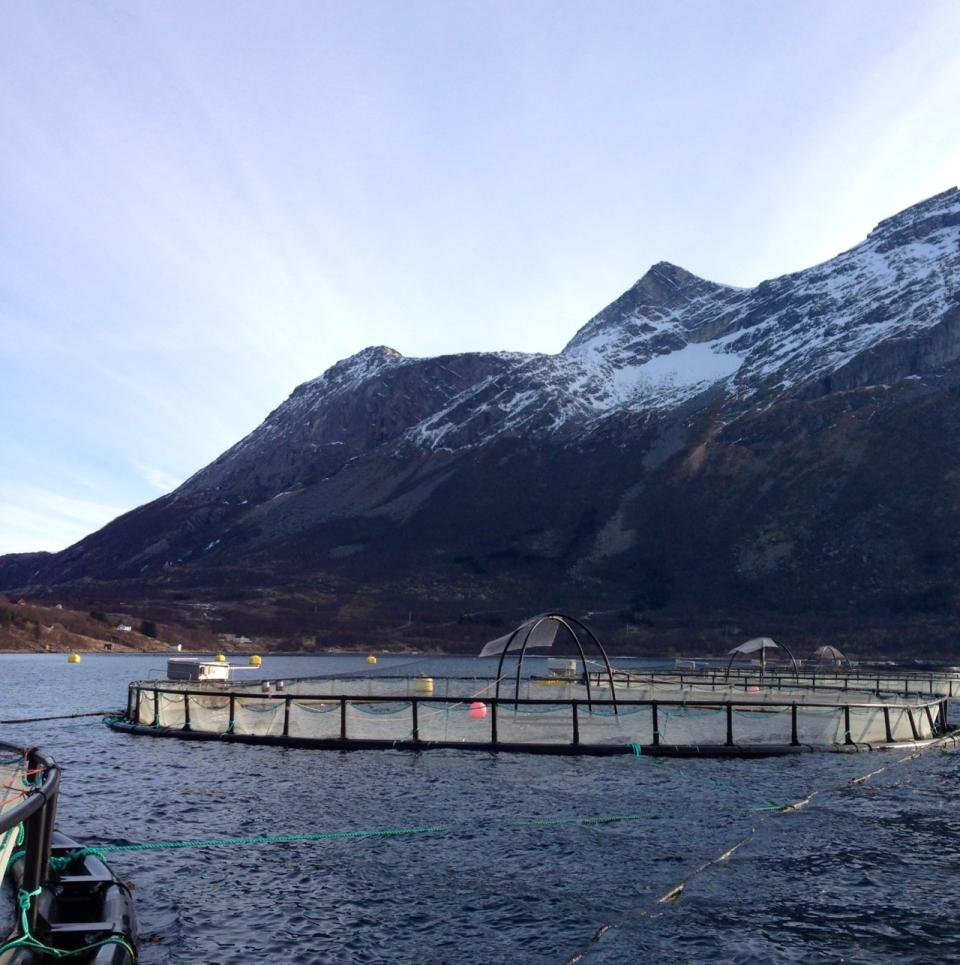Exclusive: Whole Foods Now Sells Its Most Eco-Friendly Farmed Salmon Ever

Photo: Eising Studio/StockFood
Attention, Whole Foods shoppers: The grocery giant announced Thursday that it now sells the most environmentally friendly farmed salmon ever in its nearly 36-year history. The fish, which is currently in stores nationwide, is the first Norwegian-farmed salmon to earn a yellow “Good Alternative” rating from the Monterey Bay Aquarium’s respected Seafood Watch program.
It’s big news for several reasons. These days, about 70 percent of the world’s salmon is farmed, and 60 percent of that comes from Norway. Plus, salmon is the most popular item at Whole Foods’ seafood counter.
Farmed salmon tends to get a bad rap because many of those farmers treat their fish with antibiotics and pesticides. Also they often have a poor ratio of how much food is needed to produce new fish. The industry standard is 1.6 pounds of food to raise a single pound of salmon, which is taxing on the environment.
The new salmon at Whole Foods — sourced from Norwegian fish farms Kvarøy and Selsøyvik — requires less than one pound of food to create a pound of fish, making it more environmentally friendly. A Whole Foods spokesperson said it’s the first time such a thing has ever been achieved in salmon aquaculture.
Related: Why You Shouldn’t Be Alarmed by Crystals in Your Canned Tuna

Pens at salmon farms Kvarøy and Selsøyvik. (Photo: Kvarøy and Selsøyvik)
“It’s the holy grail because you’re not using more protein to make protein,” said Steven Damato, co-founder of Blue Circle Foods, which worked with Whole Foods, Kvarøy, and Selsøyvik to bring the fish to market. “You’re becoming a net protein producer,” he said.
Then there’s the issue of contaminants. Many feeds designed for farmed salmon contain them, notably heavy metals and PCBs (polychlorinated biphenyls), which can show up in the fish itself. But the farmed salmon currently sold at Whole Foods is raised on a feed called In the Blue, developed by Whole Foods, Blue Circle Foods, and the feed company BioMar.
Unlike other feeds, which are made with whole fish, 50 percent of In the Blue is made with fish trimmings that might otherwise be thrown away. They’re pressed into oil and cleaned of contaminants, producing an eco-friendly product that Whole Foods says is just as effective as traditional feeds. Trimmings are not counted when calculating the salmon’s fish-in, fish-out ratio because technically, no new fish are removed from the sea to produce its feed.
“We want to reduce the number of fish we’re taking out of the ocean,” Damato explained. “The more we can reduce that, the healthier it is for the ocean.”
Related: Oyster Fraud: The Restaurant Industry’s Dirty Little Secret
Carrie Brownstein, the seafood quality standards coordinator for Whole Foods Market, told Yahoo Food that it’s been a long process. In the lead-up to 2007, when Whole Foods made public its new standards for farmed salmon, the grocery chain began searching in earnest for farmers that fit its vision. “We use a very in-depth process for developing the standards,” she said, adding that a third-party company makes sure farmers are in compliance.
The strict standards — which include a low fish-in, fish-out ratio, low contaminants, no artificial preservatives, no antibiotics, and no colorants — were too rigorous for many of Whole Foods’ suppliers at the time, and Brownstein said the grocery chain axed about half of them. “The people who stayed in the program were the people who said, ‘We can do that,’ ‘We’re close to doing that,’ or ‘We’re already doing that.’”
Related: Is Kale ‘Healthy?’ Diet Language Goes Under the Microscope

Image credit: Blue Circle
The Monterey Bay Aquarium’s Seafood Watch program explains on its website how it decided on the yellow rating for salmon raised at Kvarøy and Selsøyvik. “Salmon are stocked at lower-than-typical densities and no antibiotics are used during production,” the site reads, adding that farm methods allow for less use of chemicals.
Fortunately for Whole Foods’ customers, the improvement in quality won’t come with a hefty price tag. The eco-friendly farmed salmon costs the same as the chain’s previous farmed salmon offerings: $9.99 a pound for frozen, and no higher than $12.99 a pound for fresh. The goal, Brownstein said, is simply to offer a better product.
Alf-Gøran Knutsen, the third-generation owner of Kvarøy and Selsøyvik salmon farms, explained the rationale for bringing his companies up to Whole Foods’ standards. “We didn’t need to take it another step forward — that’s something we wanted to do because we wanted to be one of the leading companies developing Atlantic salmon in Norway,” he said. “I care about the environment, and I care about producing something healthy.”
Still curious about Whole Foods? Here are more stories:
Whole Foods Opening Lower-Priced Stores to Snag Millennials
How to Save Money at Whole Foods

